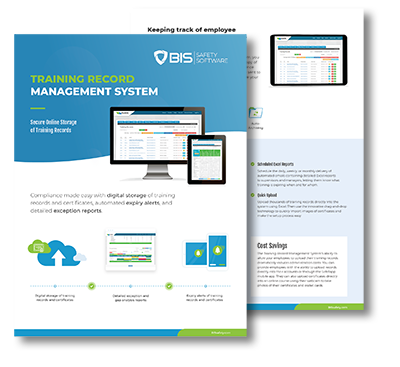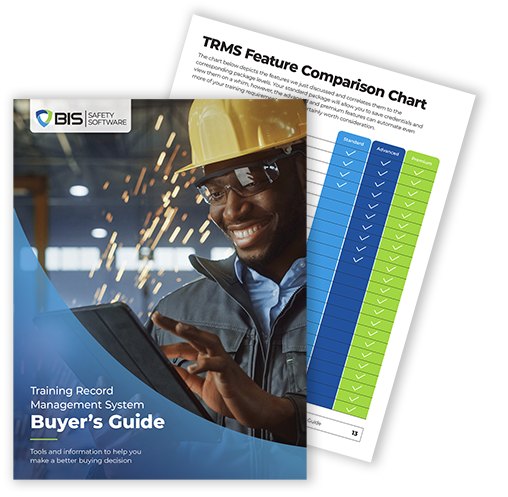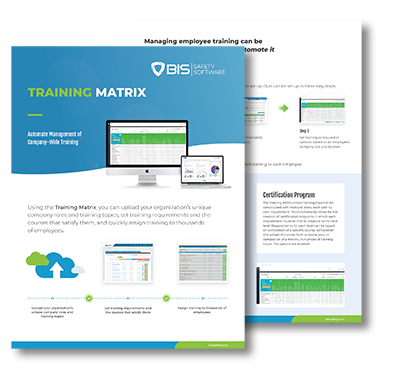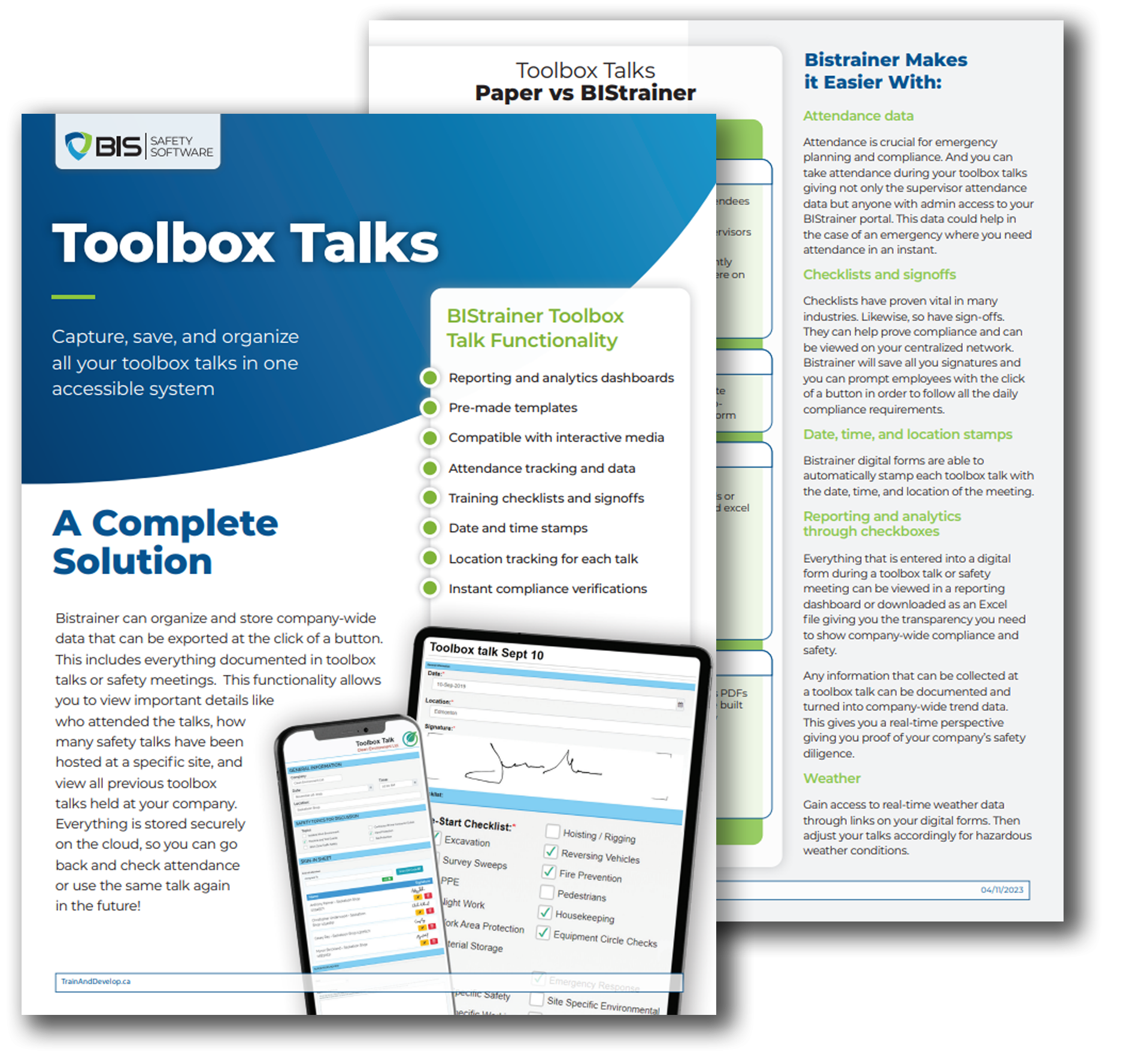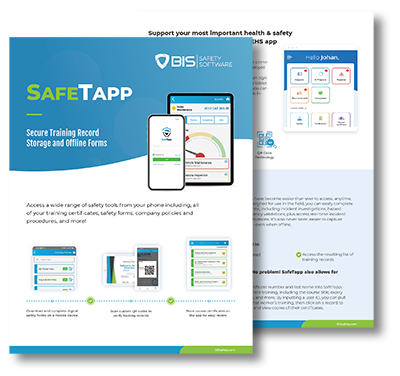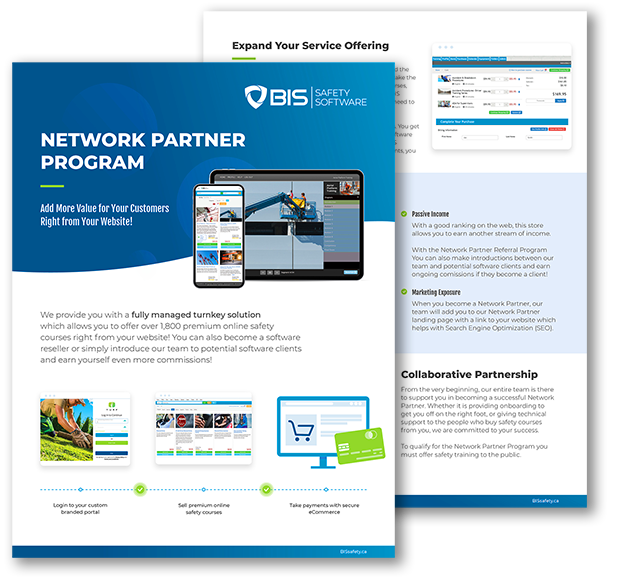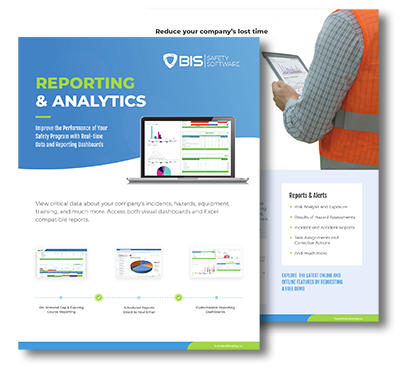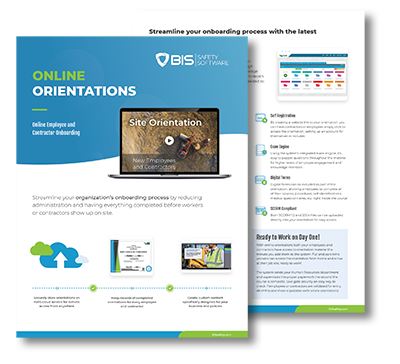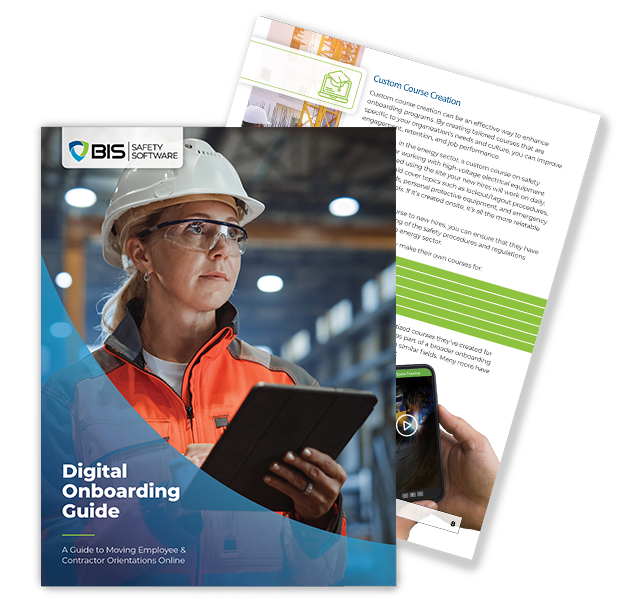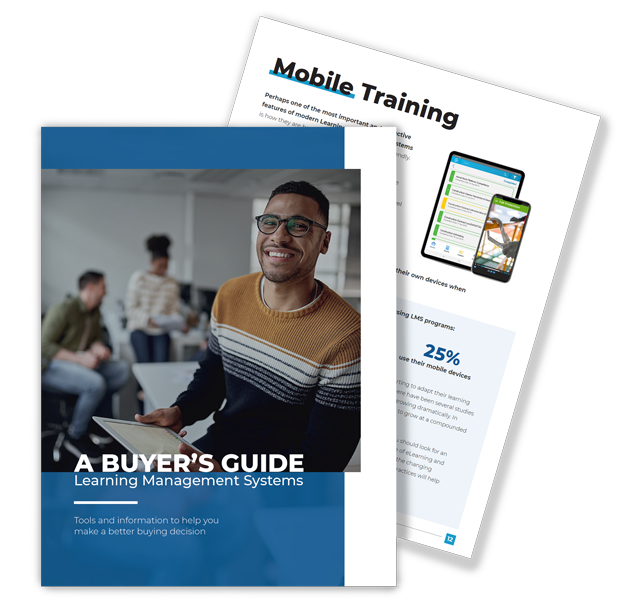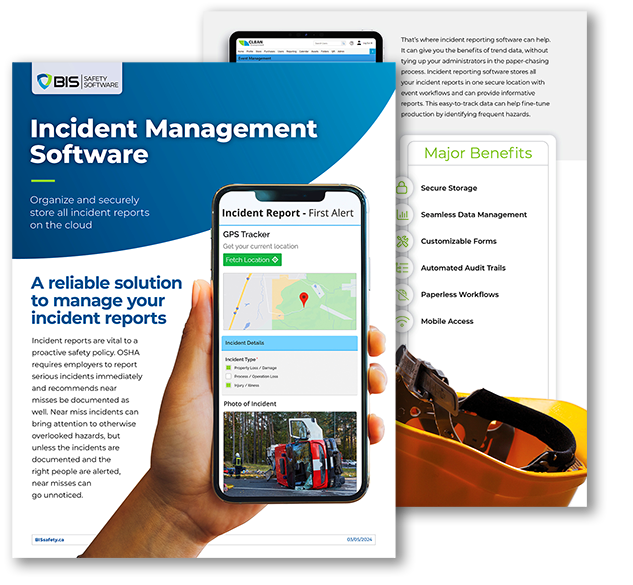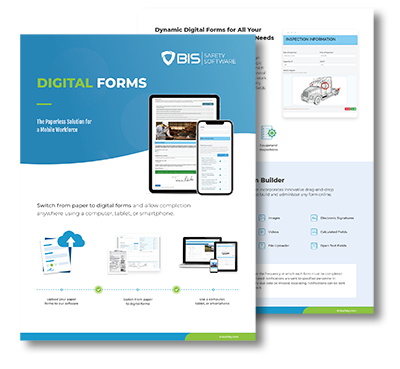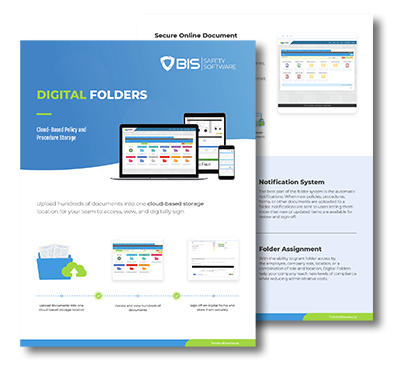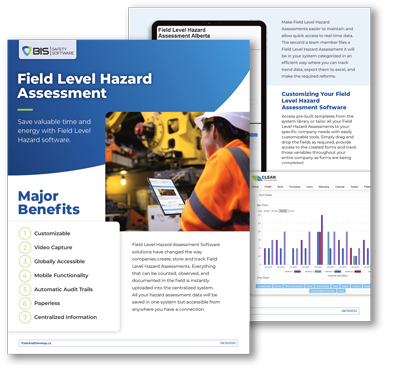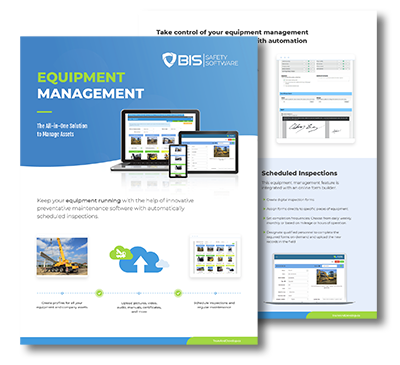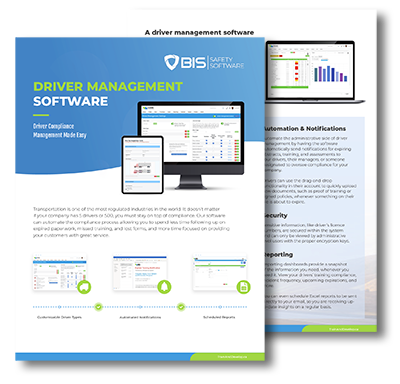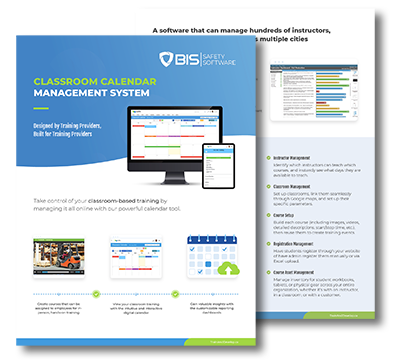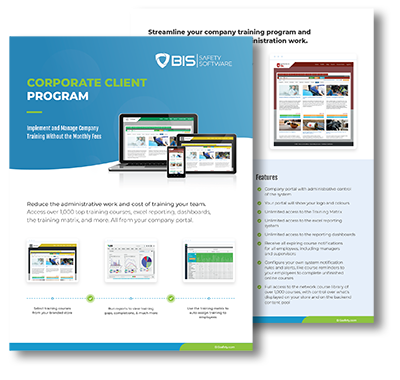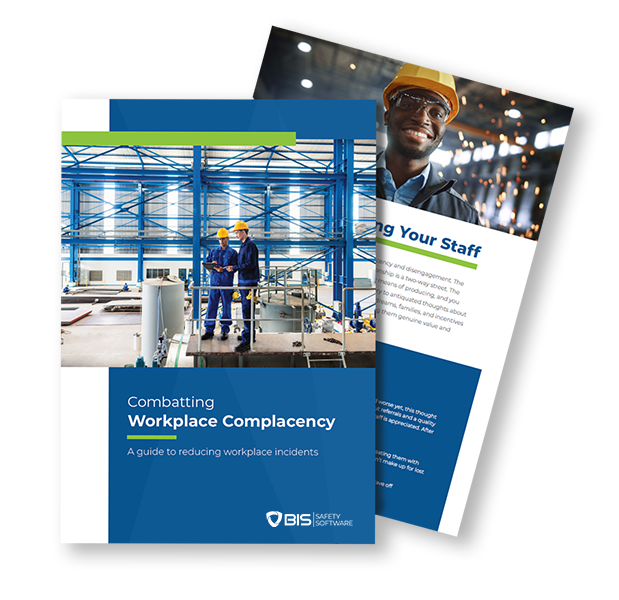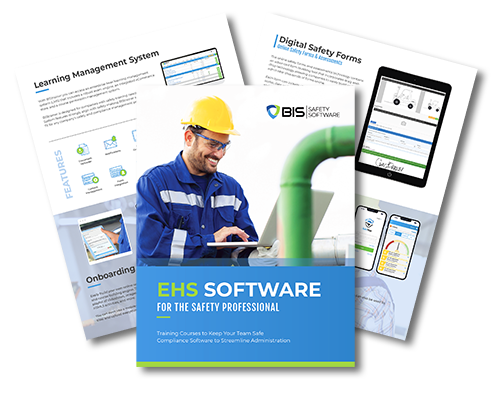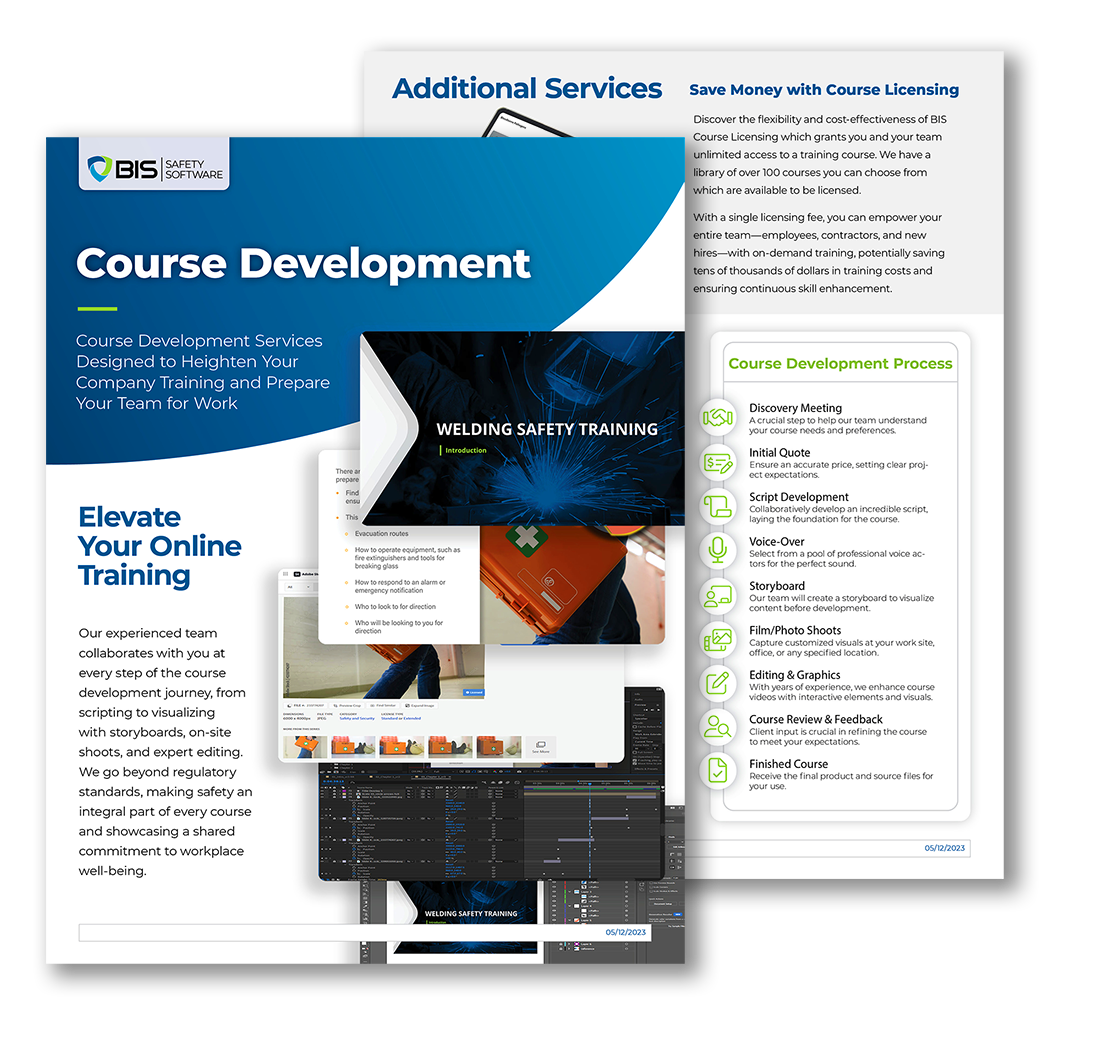The Problem with Safety? We Made it Boring.

Home The Problem with Safety? We Made It Boring. We Made It Boring Lastra talks psychology, VR, and AI in workplace training. March 27, 2025 By Luke Hillenbrand Lessons from the Trenches Nobody gets into safety because they want to fill out paperwork. They do it because they’ve seen the alternative. The fall that didn’t need to happen. The drum of chemicals that nearly took out half a city block. The team member who never made it home. But somewhere along the line, we buried that urgency in binders. We took a discipline built on adrenaline, risk, and responsibility — and we turned it into a desk job. We reduced it. To clipboards, to compliance checklists. To one-hour training videos that people forget before lunch. We made safety boring. Worse than that — we made it easy to ignore. And if we don’t fix that, people are going to keep getting hurt. Safety Isn’t a Department. It’s a Culture. Walk onto most job sites, and you’ll hear the same thing: “Safety is everyone’s responsibility.” Sounds great. Except that in a lot of companies, safety still lives in its own little silo. The safety person walks the floor, gives a thumbs-up, maybe rattles off a checklist. They go back to their office to update the system. Meanwhile, the crew is out there making real decisions. In real time. With real consequences. They’re the ones balancing a ladder on uneven ground. They’re the ones guessing whether the insulation is live. They’re the ones dealing with surprise weather, faulty equipment, and the very real pressure to get things done fast. Wes Rundle has had to make some of these decisions himself, and knows how important it is to keep safety simple. He’s helped overhaul safety systems across many companies. From emergency planning in chemical plants to concrete coring crews mid-pandemic, he’s seen it all. And the lesson’s always the same: if your system adds friction, people will work around it. You can’t layer complexity onto complexity and expect it to stick. You have to meet people where they are. Make it seamless. Make it make sense. The more forms you pile on, the less likely someone is to stop and think. The goal is not more paperwork. The goal is fewer injuries. Fewer close calls. And more people going home safe. “Safety needs to be simple. Because the work is already complex.” Wes Rundle The Myth of the Competent Worker Here’s a common scenario: a worker finishes their online course, gets the certificate, and their manager checks the box. They’re “trained.” Right? Robin Postnikoff doesn’t buy it. He’s the founder of MI Safety, and he’s watched the industry pretend that theory equals ability. It doesn’t. “We’ve had this idea that a worker can take a generic course and walk out competent,” he says. “But you can’t learn to drive by reading about it. You’ve got to be behind the wheel.” That’s why his company builds practical evaluations right into the system. Learn the theory online. Prove it in person. Simple. Because you’re not training someone for a pop quiz. You’re training them for the moment things go sideways. The equipment jams. The scaffold gives. The procedure fails. That’s when training matters. And it’s not just about liability. It’s about dignity. If you put someone on a job they’re not prepared for, that’s not just a risk. That’s a betrayal. So Where Do We Go From Here? We’ve built systems that look good on paper—but paper doesn’t save lives. The truth is, most safety programs aren’t broken. They’re just built on the wrong foundation. Theory without practice. Compliance without clarity. Rules without ownership. But it doesn’t have to stay that way. Because when safety is done right, it’s not boring. It’s built into every decision, every habit, every conversation that happens before something goes wrong. In Part 2, we’ll dive into what that really looks like—on the ground, in the moment. From psychological safety to VR training to culture that actually sticks. The future of safety isn’t about perfection. It’s about trust, mindset, and showing up for each other—every single day. BIS Social Media Follow BIS Safety Software for industry-leading safety updates, training solutions, and more. Hover over each icon for quick access to follow, share, or explore our other channels. Frequently Asked Questions Have question in mind? We are here to answer. If you don’t see your question here, drop us a line at our contact page. Lorem Ipsum is simply dummy text of the printing and typesetting industry? Lorem ipsum dolor sit amet, consectetur adipiscing elit. Ut elit tellus, luctus nec ullamcorper mattis, pulvinar dapibus leo. Lorem Ipsum is simply dummy text of the printing and typesetting industry? Lorem ipsum dolor sit amet, consectetur adipiscing elit. Ut elit tellus, luctus nec ullamcorper mattis, pulvinar dapibus leo. Lorem Ipsum is simply dummy text of the printing and typesetting industry? Lorem ipsum dolor sit amet, consectetur adipiscing elit. Ut elit tellus, luctus nec ullamcorper mattis, pulvinar dapibus leo. Lorem Ipsum is simply dummy text of the printing and typesetting industry? Lorem ipsum dolor sit amet, consectetur adipiscing elit. Ut elit tellus, luctus nec ullamcorper mattis, pulvinar dapibus leo. Lorem Ipsum is simply dummy text of the printing and typesetting industry? Lorem ipsum dolor sit amet, consectetur adipiscing elit. Ut elit tellus, luctus nec ullamcorper mattis, pulvinar dapibus leo. Lorem ipsum dolor sit amet, consectetur adipiscing elit. Ut elit tellus, luctus nec ullamcorper mattis, pulvinar dapibus leo. Lorem ipsum dolor sit amet, consectetur adipiscing elit. Ut elit tellus, luctus nec ullamcorper mattis, pulvinar dapibus leo. Lorem ipsum dolor sit amet, consectetur adipiscing elit. Ut elit tellus, luctus nec ullamcorper mattis, pulvinar dapibus leo. Lorem ipsum dolor sit amet, consectetur adipiscing elit. Ut elit tellus, luctus nec ullamcorper mattis, pulvinar dapibus leo. Lorem ipsum dolor sit amet, consectetur adipiscing elit. Ut elit tellus, luctus nec ullamcorper mattis, pulvinar dapibus leo. Related Articles All Posts 360 Immersive Alberta safety courses awareness BambooHR integration biometric sensors BIS
Partner Perspective: KBR Safety Training

Home Partner Perspective: Delivering Smarter Safety Training with BIS Delivering Smarter Safety Training with BIS Lastra talks psychology, VR, and AI in workplace training. March 26, 2025 By Luke Hillenbrand In high-risk industries like oil and gas, maintaining a safe workplace isn’t just a regulatory box to check—it’s a daily necessity. With field teams operating around the clock and across vast distances, the need for accessible, high-quality training is more critical than ever. For one senior manager at KBR Safety Training, the challenge was clear: how do you ensure consistent, compliant training across a large, distributed workforce while also streamlining administrative overhead? After extensive research into learning management systems and safety training solutions, KBR found the answer in BIS Safety Software—a platform that delivered not only robust tools but also a strategic opportunity to help others in the industry do the same. Seeking Simplicity in a Complex Landscape KBR Safety Training was established with a focused mission: to find and deliver effective safety training content that could be accessed anytime, anywhere. This wasn’t a side project—it was a strategic initiative designed to support internal training needs while also offering value to other organizations operating in similarly complex, safety-sensitive environments. ————————————————————————— “We didn’t need just a course portal. We needed a system that could scale, deliver on compliance, and simplify things for the boots on the ground. After evaluating over a dozen platforms, BIS was the clear winner.” KBR Senior Manager ————————————————————————— From a seamless user experience to an expansive course library and powerful administrative features, BIS offered a complete training ecosystem. It worked across both Canadian and U.S. regulations—an essential factor for organizations operating on both sides of the border—and provided tools that could grow with the company. The Tools That Made the Difference While many systems promised streamlined training, KBR’s leadership found that BIS delivered in two key areas where others fell short: 1. The Training Matrix Tracking employee training is often one of the most time-consuming and error-prone tasks for safety and HR teams. BIS’s Training Matrix simplified this instantly—offering real-time visibility into: Who is trained on what When certifications expire Which training is mandatory for each role Gaps that could affect compliance ————————————————————————— “The Training Matrix is unreal,” the manager noted. “It gives us a level of clarity we didn’t have before—whether we’re managing ten people or hundreds.” ————————————————————————— 2. Driver File Management Managing heavy vehicle operators comes with a unique set of compliance challenges, especially during audits. KBR used BIS’s Driver File Management tools to bring everything—licenses, certifications, performance reviews, and more—into a single, easily searchable location. ————————————————————————— “The Training Matrix is unreal,” the manager noted. “It gives us a level of clarity we didn’t have before—whether we’re managing ten people or hundreds.” ————————————————————————— These tools not only saved time but also reduced stress for managers and teams, ensuring that records were never out of date and no document was lost in the shuffle. Turning a Tool Into a Partnership What began as a search for a software solution evolved into something more: a strategic partnership. By becoming an Authorized Partner of BIS Safety Software, KBR Safety Training now helps other companies in its network access the same powerful tools that transformed its own operations. ————————————————————————— “We trust BIS with our internal operations—that confidence is why we recommend it to others,” said the manager. “It’s not just about reselling training. It’s about helping other businesses achieve the same level of compliance and peace of mind.” ————————————————————————— Through this partnership, KBR not only supports its internal teams but also empowers other organizations in the oil and gas sector with the tools they need to protect their people, pass audits, and stay ahead of evolving regulations. Conclusion: Why the Right Partner Matters As regulatory demands grow and the need for streamlined training becomes universal, companies like KBR are proving that the right tools—and the right partnerships—can make all the difference. With BIS Safety Software, they found more than a platform. They found a partner that shares their values and enables their vision. Whether you’re a safety manager, HR lead, or operations executive looking for better training solutions, KBR’s journey shows what’s possible when technology and purpose align. More about KBR Safety Training What Sets Training Source Apart? KBR Safety Training was created with a clear goal: to make it easier for companies to access reliable, compliant safety training through a trusted platform. By partnering with BIS Safety Software, KBR offers clients streamlined access to a broad library of industry-recognized training—available online 24/7 and tailored to meet regulatory standards across North America. Training That Works in the Real World KBR doesn’t just resell courses—they use BIS tools internally to support compliance, pass audits, and improve safety performance across operations. Features like the Training Matrix and Driver File Management system have helped simplify record-keeping and dramatically reduce audit preparation time. Looking Ahead: The Future of KBR Safety Training As an Authorized Partner of BIS Safety Software, KBR Safety Training is committed to helping clients adopt better safety systems, deliver consistent training, and maintain full regulatory compliance. The future of safety lies in smart tools—and KBR is here to make them more accessible. BIS Social Media Follow BIS Safety Software for industry-leading safety updates, training solutions, and more. Hover over each icon for quick access to follow, share, or explore our other channels. Frequently Asked Questions Have question in mind? We are here to answer. If you don’t see your question here, drop us a line at our contact page. Lorem Ipsum is simply dummy text of the printing and typesetting industry? Lorem ipsum dolor sit amet, consectetur adipiscing elit. Ut elit tellus, luctus nec ullamcorper mattis, pulvinar dapibus leo. Lorem Ipsum is simply dummy text of the printing and typesetting industry? Lorem ipsum dolor sit amet, consectetur adipiscing elit. Ut elit tellus, luctus nec ullamcorper mattis, pulvinar dapibus leo. Lorem Ipsum is simply dummy text of the printing and typesetting industry? Lorem ipsum dolor sit amet, consectetur adipiscing elit.
Shaking Hands with Einstein’s Legacy
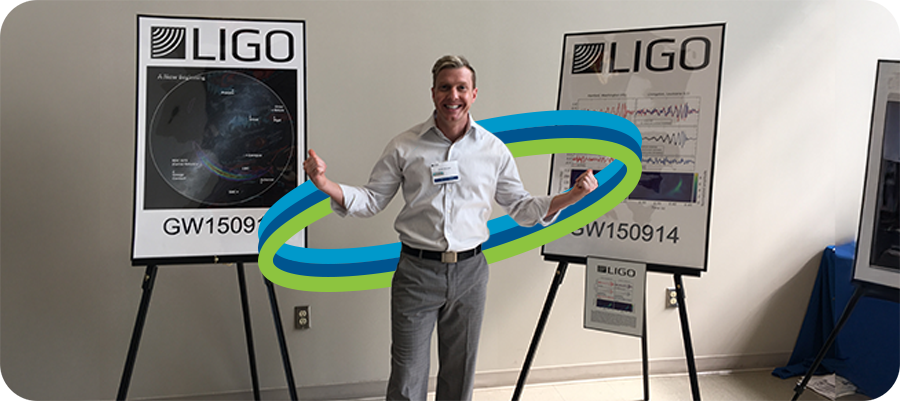
Home Shaking Hands with Einstein’s Legacy: Danny Sellers and LIGO Danny Sellers and LIGO Lastra talks psychology, VR, and AI in workplace training. March 25, 2025 By Luke Hillenbrand High Voltage, Black Holes, and Building a Culture of Safety Danny Sellers started in the deep South. Wiring up petrochemical plants, wrangling high-voltage power systems. Now? He helps humanity hear the universe. Space science. Growing up in Louisiana, Danny was surrounded by heavy equipment, industrial know-how. His family members who worked with their hands. One of those family members owned one of the largest electrical instrumentation contract companies in the southern United States. This gave Danny a front-row seat to the world of high-risk, high-skill trades. “Spending summers at the shop helping out, I kind of was determined I was going to go in that field anyway,” he says. By the time he graduated high school, he had already completed parts of his electrical training. He was working in petrochemical plants at 18, and he was learning. About power distribution, process control, instrumentation. “You learn quick in that kind of environment,” he says. “You’re working around systems that can kill you in a second if you don’t respect them.” He spent years traveling from site to site across the United States. ————————————————————————— “I’ve worked at, you know, the Big Dig in Boston, Eli Lilly Pharmacy—you know, just all around. You see a lot of different practices out there. You learn real quick the importance of staying sharp, especially when you’re working around high voltage or confined spaces.” Daniel Sellers ————————————————————————— Eventually, the constant travel gave way to something else: a desire to settle down. He joined Dow Chemical, working on high-voltage distribution and cogeneration systems. But even in that more stable role, safety was never an afterthought. “A lot of your large petrochemical industries actually generate their own power,” he says. “It’s just cheaper for them to do that. So we have Cogen plants, natural gas turbines and stuff.” He added that working in those environments meant managing both the energy systems and the safety risks that came with them. But the routine wore thin. “Plant work didn’t really suit me. It was just kind of the same thing every day,” he says. So he changed course again. Lasers, Gravity, and a New Way to See the Universe In 2002, Danny took a contractor job at a relatively obscure facility in Livingston, Louisiana: LIGO. His first task? Helping control the HEPI system, a complex hydraulic isolation setup. It keeps the facility’s delicate instruments undisturbed by vibrations from the outside world. “I was actually working on what we call here our HEPI system—a hydraulic isolation system—doing controls for that,” he says. “Probably after about two years, I was invited into the director’s office… they slid a piece of paper to me and said, ‘How would you like to come here and do this?’” And just like that, he was in. LIGO—the Laser Interferometer Gravitational-Wave Observatory—isn’t your average workplace. It’s where Danny went from contractor to full-blown cosmic detective. His job? Help run a machine so precise it measures changes in space smaller than a proton. “We shoot a laser beam down two 4-kilometer arms and measure differential length of space and time,” he explains. “The wave we’re looking for? It changes that distance by about 1/1000th the size of a proton. It’s pretty much the finest measurement ever made by man.” That wave isn’t just any ripple. It’s a gravitational wave from massive cosmic collisions. Black holes smashing into each other, neutron stars spiraling to their deaths. And the system to detect them? It’s safety-critical on every level. ————————————————————————— “When you’re dealing with that kind of sensitivity, everything matters. The procedures, the lockouts, the calibrations. There’s no winging it. Everything has to be documented, verified, and double-checked.” Daniel Sellers ————————————————————————— Einstein Said It Couldn’t Be Done Einstein predicted gravitational waves in his theory of general relativity—but even he didn’t think we’d ever detect them. “Even then, he said, ‘No one will ever be able to build a detector or a machine that could pull this off,’” Danny says. But LIGO proved him wrong. After years of fine-tuning, upgrades, and grueling testing, LIGO made its first official detection of gravitational waves in 2015. That ripple in space-time confirmed a key part of Einstein’s theory and helped win a Nobel Prize. Danny was there for it. Running shifts. Locking the detector. Helping keep the whole system stable enough to make the most precise measurement in human history. “Training here is constant,” he adds. “Everyone gets trained on operating the detector, understanding hazards, and following procedures. We don’t just read manuals—we live them.” Working With Giants—and Lasers This isn’t a desk job. Danny trained on locking the detector, ran night shifts, and worked alongside Nobel laureates like Rainer Weiss. Weiss, an MIT physicist, conceptualized LIGO. “This is a man that… only took on one or two students a year,” Danny recalls. “I’ve spent, Lord knows how many hours—2:00 in the morning with him—personally working on the side.” At LIGO, knowledge flows freely. It’s a place where someone can go from a petrochemical plant to collaborating with the brightest physicists in the world. Want to learn something? “There’s a specialist or somebody here who has done their thesis or PhD in that subject… and it’s free,” Danny says. “Whatever you want to know, someone here knows it. You just have to ask.” His role expanded beyond electrical work. He dove into optics and lasers. He ran operations on the detector floor. He learned how to lock, align, and monitor sensitive systems. These systems can pick up passing trucks on the highway—or earthquakes on the other side of the planet. And through it all, safety remained central. “We’re not building widgets. We’re listening to the universe,” Danny says. “But we’re doing it with protocols and systems designed to protect the people and the science.” What’s Next? Danny’s path wasn’t planned. It was built—step by step, wire
Safety Culture vs. Safety Theater

Home Safety Culture vs. Safety Theater: Are You Protecting Workers or Just Performing? Safety and morale or smoke and mirrors… March 21, 2025 By Luke Hillenbrand Some workplaces talk a big game about safety. Posters on the walls. Slogans in emails. Maybe even a “Safety First” banner hanging in the breakroom. But when you look closer, it’s all for show. That’s safety theater—where rules exist on paper, but not in practice. Real safety culture is different. It’s not about looking compliant—it’s about keeping people alive. True safety culture means workers don’t just follow rules because they have to. They follow them because they understand why they exist. It’s a shift from treating safety as a burden to seeing it as a necessity. Companies that only focus on appearances end up with workers who go through the motions. Meanwhile, real hazards remain unchecked. When that happens, it’s not a question of if an accident will happen, but when. The Difference Between Culture and Theater Safety Theater refers to policies that look good on paper but don’t actually prevent accidents. These include excessive paperwork, pointless PPE rules, and outdated procedures that nobody follows. By contrast, Safety Culture is when workers at every level prioritize safety. They don’t just talk about safety. They take real steps to make it part of daily work and decision-making. In a strong safety culture, workers have the confidence to stop unsafe work. Shortcuts aren’t ignored, and training is more than just a requirement—it’s a priority. A strong safety culture means workers feel empowered to stop unsafe work. It means shortcuts don’t get ignored. It means training isn’t just a formality—it’s a priority. When safety theater takes over, companies create a false sense of security. Workers may assume they’re safe just because procedures exist. But if those procedures aren’t tested or enforced, they mean nothing. Real safety culture isn’t about checking boxes. It’s about making sure every worker goes home safe. Signs of Safety Theater Some companies think they’re prioritizing safety, but they’re really just checking boxes. Here’s how to tell the difference: Endless paperwork, but no real enforcement. If reports are filed but hazards don’t get fixed, it’s just theater. Workers afraid to report safety issues. If speaking up means punishment or being ignored, safety is just for show. Lip service from leadership. If managers push productivity over safety, their real priorities are clear. Outdated or irrelevant training. If workers aren’t learning anything useful, the training is just a box to check. Focus on blaming workers instead of fixing systems. Real safety looks at root causes, not just who messed up. No follow-through after incidents. If accidents happen but nothing changes, safety is not a real priority. One-size-fits-all rules. Every industry has different risks—blanket policies don’t address real hazards. More concern for compliance than real protection. Following the law is important, but real safety goes beyond minimum requirements. The Hidden Costs of Safety Theater A company that treats safety as a performance rather than a practice is playing a dangerous game. The hidden costs of safety theater go beyond injury rates: Employee disengagement. When workers know safety is just a show, they stop taking it seriously. Regulatory trouble. Compliance officers see through the act. Companies that fake safety will eventually face fines or shutdowns. Increased turnover. Employees don’t stay where they don’t feel safe. High injury rates lead to high quit rates. Legal liability. Faking safety won’t hold up in court. Companies can be sued for negligence if they fail to protect their workers. Building a Real Safety Culture Fixing safety theater takes real commitment. Here’s how workplaces can shift from performance to protection: Empower Workers to Speak Up. Workers should feel safe stopping work if they see something unsafe. They must trust that reporting hazards won’t lead to retaliation. Prioritize Training That Matters. Skip the generic safety videos. Teach workers about the specific risks they face daily. Fix Problems, Don’t Just Document Them. Reporting a hazard isn’t enough—companies need to act on it. Hold Leaders Accountable. Safety starts at the top. If management isn’t following the rules, workers won’t either. Measure Safety by Actions, Not Paperwork. Track real safety actions like near-miss reports, hazard fixes, and worker feedback. Don’t just count how many forms get filled out. Encourage Realistic Safety Drills. A fire drill where everyone casually walks to an exit isn’t enough. Make drills real. Add pressure. Test workers in situations that mimic actual emergencies. Reward Safe Behavior. When workers make safety-conscious decisions, recognize them. Positive reinforcement builds better habits than punishment. Invest in the Right Safety Tools. If a workplace demands PPE, make sure it’s comfortable and practical. Workers are more likely to use gear that fits well and doesn’t hinder their job. Make Safety Part of Everyday Conversations. Safety shouldn’t just be a monthly meeting topic. It should be discussed on job sites, in pre-shift meetings, and during training sessions. Audit Safety Practices Regularly. Don’t assume policies are followed—check them. Conduct surprise safety audits and correct issues immediately. Examples of Safety Culture vs. Safety Theater Imagine a warehouse that claims safety is a priority. Posters cover the walls, and training sessions are scheduled regularly. But in reality, workers are pushed to meet impossible quotas. Forklift drivers neglect seat belts. Safety violations are brushed aside in the name of productivity. Eventually, an accident happens, and suddenly, all those ignored risks become real consequences. Now, contrast that with a construction company that takes a different approach. After a close call, they don’t just sweep it under the rug. They start holding daily safety meetings and actively encourage workers to report near misses. Instead of ignoring potential risks, they address them head-on. Workers are rewarded for taking safety seriously, reinforcing a culture where speaking up is valued. Over time, injuries decrease, and workers become more engaged in safety efforts. The company earns a reputation for prioritizing protection over production speed. The difference between safety culture and safety theater is simple. One is a performance for
Jody Young vs. Workplace Tragedy

Home Jody Young vs. Workplace Tragedy A Career Spent Fighting for Safer Jobs Young on cultures of “top-down safety”. March 20, 2025 By Luke Hillenbrand “Every worker should go to work and come home in the same shape they left.” Jody Young has spent 35 years in health and safety. She has shaped policies. She has enforced compliance. She has made a real impact on workplace safety in Canada. Her career spans both public and private sectors. That gives her a unique depth of experience. Now, she leads Workplace Safety and Prevention Services (WSPS). Over the years, she has watched safety regulations evolve. She has seen the challenges companies face in protecting their workers. And she knows what happens when they fail. She has witnessed the ripple effects of unsafe workplaces. The long-term consequences don’t just impact injured workers. Families suffer. Communities feel the loss. A single lapse in safety can lead to lawsuits, financial ruin, and immeasurable grief. For Young, this is more than just a job. It’s a quest to make a difference through prevention. From Environmental Science to Safety Leadership Young was an environmental science student at the University of Toronto. She took a summer placement in a mining company’s environment and health and safety department. That experience changed everything. She saw how safety could mean the difference between life and death. She started out in industrial hygiene testing, both underground and in surface plants. WHMIS was just being introduced, and she helped with surveys and training. Over time, employers sought professionals who understood both environmental and safety compliance. That demand worked in her favor. She landed key job opportunities and spent years in the private sector. Mining. Abrasives manufacturing. Construction. Waste handling. Paint manufacturing. Each industry had its own risks. She saw workers injured. She saw how preventable incidents disrupted lives. When safety failed, workers – and their families – paid the price. Then she moved into the public sector. She worked for labour ministries in Ontario and Alberta. That’s when she saw how big an impact compliance and enforcement could have. ————————————————————————— “I felt that I could actually make a bigger impact in safety. The results were immediate, and you could see the difference.” Jody Young ————————————————————————— She saw it firsthand—investigations, fines, court cases, and families left broken by a single moment. Every injury, every fatality, reinforced her mission. Her work didn’t stop at enforcing laws. She worked with businesses to help them improve safety practices. She connected employers with best practices. Following regulations wasn’t enough. They had to build safer workplaces. She connected businesses with government agencies. Together, they built a stronger safety culture. A Personal Mission For Young, safety isn’t just a career. It’s personal. “My own father suffered a life-altering accident in his workplace. I’ve always only known my father with one leg,” she says. That reality shaped her perspective. She understood what workplace injuries did to families. Her work as an investigator made her passion even stronger. She has sat with families who lost loved ones. She has guided them through investigations and court cases. She has been in their homes, held their hands, and seen their grief up close. These moments fueled her mission. No worker should suffer because an employer cut corners or simply lacked awareness. No child should grow up without a parent because a company ignored basic safety measures. Young has also worked with injured workers. She has seen the physical and emotional toll. People who once thrived in their jobs now struggle with pain, disability, and financial instability. These stories stay with her. She believes the best way to prevent tragedies is to foster a culture where safety is valued from the top down. That means pushing for strong leadership commitment. Encouraging open dialogue about risks. Creating policies that go beyond the bare minimum to truly protect workers. The Role of WSPS in Ontario’s Safety System Today, Young leads WSPS, a key player in Ontario’s health and safety system. She describes WSPS as part of a three-legged stool. The Workplace Safety and Insurance Board (WSIB) handles compensation and return to work and supports prevention. The Ministry of Labour, Immigration, Training and Skills Development sets, communicates and enforces occupational health and safety requirements. WSPS’ role is to focus on providing training and consulting services to prevent workplace injuries and illnesses. “We have an important mandate set out in legislation,” Young explains. “We are part of the prevention system funded by employer premiums collected through the WSIB.” WSPS works directly with businesses. They help develop safety programs. They conduct risk assessments. They offer hands-on training. The goal is simple—stop accidents before they happen. WSPS provides guidance on everything from machine safety and robotics to workplace violence and harassment and mental health. They help small businesses create safety programs that are legislatively compliant. WSPS’ sector specific training programs and onsite services teach employers and workers to spot risks early. The goal: stop tragedies before they happen. Young emphasizes that WSPS doesn’t just offer services—it builds relationships. Companies that work with WSPS get expert assistance in building their safety programs. Safety isn’t just a checklist. It becomes part of how they operate. She sees it firsthand. Companies that embrace safety run better. Workers stay longer. Morale improves. Productivity rises. A Moral Obligation Young has one core belief: Every worker should go to work and come home in the same shape they left. She sees safety as a duty, not a burden. ————————————————————————— “It’s not just about avoiding fines. Employers must protect their workers. The cost of failure is too high. People’s lives are at stake.” Jody Young ————————————————————————— Safety isn’t just about compliance. It’s about culture. Workers need to feel safe speaking up. Leaders need to act before accidents happen. Companies that invest in safety see fewer injuries. But they also see higher morale and better productivity. She knows that some businesses still resist safety measures. They see them as costly. Time-consuming. Bureaucratic. But she also knows that one
Virtual Reality, Real Safety

Home Virtual Reality, Real Safety Jennifer Lastra’s Mission to Save Lives Lastra talks psychology, VR, and AI in workplace training. March 14, 2025 By Luke Hillenbrand “Compliance doesn’t equal competence. We have to do better.” Jennifer Lastra started her career as an electrician in the US Navy. She spent years working in shipbuilding and manufacturing as boots on the ground. She worked as a contractor in shipyards, frequently operating in high-risk environments with minimal supervision. This was real work, alongside people who did dangerous jobs every day. Then she saw the gaps—massive gaps in how safety was taught, understood, and retained. “I didn’t even realize how unsafe shipboard construction was until years later. The challenges go beyond just the hazards of working with electricity inside a steel vessel floating on water. And yet, we weren’t taught about self-awareness or situational awareness the way we should have been. We were just thrown in.” Jennifer Lastra Today, Lastra is on a mission to change that. As the Co-Founder and CEO of 360 Immersive, she’s pioneering the use of virtual reality (VR) in safety training. Her firm creates deeply immersive experiences. This is training that forces workers to engage, react, and remember. Her philosophy is simple: traditional training isn’t working. And if the fatality rates prove anything, it’s that the industry is long overdue for disruption. From the Navy to Night Vision to VR After the Navy, Lastra moved into shipbuilding. After that — manufacturing, making night vision goggles for military and emergency responders. She loved the sense of service—helping those who protect others. But eventually, she felt the pull to do something on her own. She wanted to build something. And in 2014, she saw her opportunity: virtual reality. “We started being able to pair cell phones with VR viewers,” she says. “Even if it was just cardboard headsets, I knew this technology had the power to completely immerse someone. And if you can immerse them, you can have the ability to modify their behavior.” Jennifer Lastra But Lastra isn’t a tech person. She never set out to be one. What drew her in wasn’t the hardware—it was the potential. “It was the perfect storm,” she says. “Entrepreneurship, powerful technology, and the chance to fix something I knew was broken.” She took that vision and started building. At first, there were skeptics. Some dismissed VR as a gimmick, a novelty. But as more companies saw the results, they realized she was onto something. “When workers go through VR training, they retain more. They react faster. They make better decisions under pressure,” she says. “It’s not theory—it’s science.” Related read: Do you own a business in the insurance industry? Check out how Artificial Intelligence is transforming the insurance industry. Fixing the Gaps in Safety Training For Lastra, the problem with traditional safety training is that it’s passive. Workers sit through hours of slide decks, printed manuals, and video lectures. They check a box, take a test, and move on. But does any of it stick? “Most safety training today is outdated and ineffective,” she says. “We’re giving workers information, but we’re not engaging them. And when the moment comes—when they’re in a real situation—what do they actually remember?” She experienced the challenge firsthand early in her career. As someone with dyslexia, she struggled to translate technical training into real-world applications. “I could pass any test you threw at me,” she says. “But when I got to the fleet, I had no idea how to apply it.” That disconnect drives her work today. 360 Immersive doesn’t just build training programs—it builds experiences. Using VR, workers are placed in hazardous environments. They react, make decisions, and see the consequences of those decisions play out in real time. “The goal is to meet learners where they are,” she says. “a scenario they’ll never forget. ”Some people learn best through reading, others hands-on, or a combination of both. VR bridges the gap, blending learning styles creating a more effective, engaging, and memorable experience.” And it’s not just about skill development. VR can replicate real-life pressures. Confined spaces, operating machinery under stress, reacting to an unexpected hazard. VR goes beyond technical skills – it’s ideal for simulating low-incident, high-risk scenarios like confined space rescues or warehouse fires, where mistakes have cost lives. “It’s a powerful tool for developing decision-making and critical thinking skills without actual consequences,” Lastra says. “The emotional connection makes training unforgettable and deeply impactful.” The Next Big Fight: Psychological Safety For Lastra, safety training isn’t just about hazard recognition and compliance – it’s about mindset. She believes psychological safety is the most overlooked factor in workplace safety. “Early in my career, I was often the first – or only – woman on the team, which made me feel like an outsider. I didn’t feel safe enough to raise my hand or ask questions. How many people still face this same challenge today?” She argues that fear prevents workers from speaking up about unsafe conditions – fear of asking a “stupid” question, fear of retaliation, fear of rejection. “People don’t speak up if they don’t feel like they belong. If they don’t feel safe,” she says. Her approach integrates psychological safety, mindfulness, and situational awareness into safety training. Instead of just teaching PPE regulations, we have an opportunity to dig deeper to understand, ‘Why aren’t you wearing it?’ or ‘Why did you skip inspecting it?’ Maybe it didn’t fit, or they were rushing to finish a task. Powerful storytelling in VR goes beyond compliance by illustrating the root causes of unsafe behaviors. By immersing learners in realistic, relatable scenarios, they build self-awareness, confidence, and the ability to speak up, take responsibility, and make safer decisions – key elements of a psychologically safe workplace. “If we can create emotional connections to training, we can change behavior. That’s the missing piece.” Jennifer Lastra The Fight for Better Standards Lastra isn’t just battling outdated training methods—she’s fighting complacency. “While yearly numbers fluctuate, the overall trend of workplace fatalities
Safety Myths
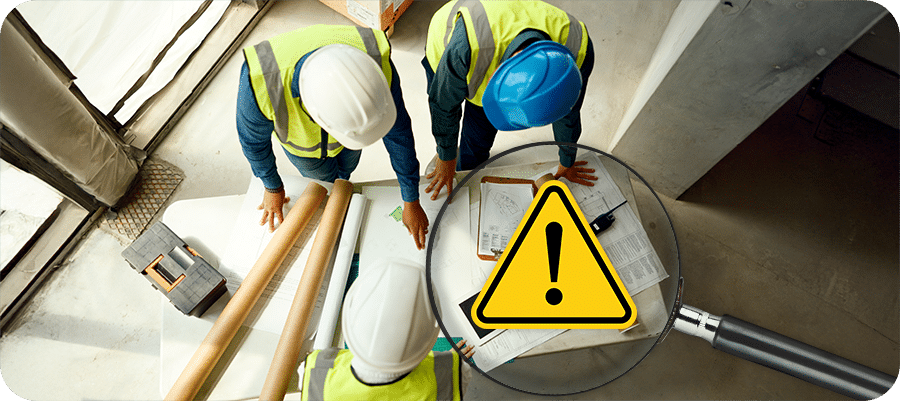
Home Safety Myths And Which Ones Need to Die! Does your workplace suffer from ‘fakelore’? March 14, 2025 By Luke Hillenbrand Some workplace safety “truths” have been passed down for years—but that doesn’t make them right. In fact, some of the most common safety beliefs are flat-out dangerous. It’s time to call them out before they get someone hurt. Here are some of the biggest myths that need to be put to bed: 1. “We’ve Always Done It This Way, and It’s Been Fine” Why it’s dangerous: Just because it worked before doesn’t mean it’s safe now. The fix: Regularly review procedures and update them based on new technology and best practices. Just because something hasn’t caused an accident yet doesn’t mean it won’t. Luck is not a safety strategy. Every shortcut taken without consequence is just stacking the odds against you. The right way to do something is the safe way—not just the way it’s always been done. This myth is especially dangerous because it resists change. New technology, updated regulations, and evolving best practices exist for a reason. Sticking to outdated methods means ignoring safer, more efficient ways to work. It’s only a matter of time before that “tried and true” approach fails in a catastrophic way. ————————————————————————— “People with [differing] attitudes or inexperience think they can cut corners, but it will catch up with them eventually. It’s just like running stop signs—you might get away with it for a while, but sooner or later, disaster strikes.” Robin Postnikoff ————————————————————————— 2. “More PPE Means More Safety” Why it’s dangerous: Too much PPE can reduce mobility and create new hazards. The fix: Use the hierarchy of controls—eliminate hazards first, then rely on PPE as a last line of defense. PPE is essential, but it’s not a magic shield. Wearing thick gloves while handling tiny components can reduce grip and increase risk. Heavy gear in hot conditions can lead to heat exhaustion. Safety starts with eliminating hazards—not just piling on more protective equipment. The key is the hierarchy of controls. Remove the hazard first. Substitute safer alternatives. Install engineering or administrative controls before relying solely on PPE. Workers need the right protection, not just more protection. ————————————————————————— “Sometimes, extreme PPE requirements actually cause more problems. We had sites where tying off at two steps was mandatory, but workers were tripping over their harness cords. It wasn’t reasonable, and people got hurt because of it.” Brett Burkard ————————————————————————— 3. “A Quick Task Doesn’t Need Full Safety Precautions” Why it’s dangerous: Accidents happen in seconds, especially when rushing. The fix: Treat every task—no matter how small—as an opportunity to follow proper safety procedures. The worst accidents happen when people skip safety steps “just for a second.” It only takes a moment for a fall, a fire, or an amputation to happen. No job is too small for safety. Related read: Do you own a business in the insurance industry? Check out how Artificial Intelligence is transforming the insurance industry. ————————————————————————— “Every rule has been written in blood. People don’t take things seriously until someone gets hurt or a company gets sued. That’s why we drill safety into training—it has to stick before something bad happens.” Robin Postnikoff ————————————————————————— 4. “If It’s Not an Injury, It’s Not a Big Deal” Why it’s dangerous: Near misses are warnings that something is wrong. The fix: Investigate and correct all near misses before they turn into serious accidents. Near misses are flashing warning signs. Ignoring them guarantees that next time, someone will get hurt. Treat close calls like actual incidents—investigate, correct, and learn from them. In industries like construction and manufacturing, near misses are often precursors to severe accidents. A worker who trips but doesn’t fall today might break a leg tomorrow. A machine that jams without consequence today might lead to an amputation next week. Reporting and addressing near misses prevent tragedies. 5. “Good Workers Don’t Need Safety Training” Why it’s dangerous: Experience can lead to overconfidence and complacency. The fix: Make regular safety training mandatory for all employees, no matter their experience level. Experience doesn’t make anyone invincible. In fact, veteran workers are often the ones who get complacent. Training isn’t just for rookies—it’s for everyone, all the time. ————————————————————————— “I don’t care if you have a master’s degree in safety. If you don’t have the experience, the network, and the mindset to keep learning, you’re not going to be a good safety person. Training is never just a ‘one and done.” Kevin Swinden ————————————————————————— 6. “Slower Work Is Safer Work” Why it’s dangerous: Moving too slowly can cause inefficiencies and increase risk. The fix: Focus on smart work—trained, controlled, and precise—rather than just slow work. Rushing is dangerous, but moving at a crawl isn’t the answer either. Safety is about working smart, not just slow. Proper training and good procedures allow workers to be both safe and efficient. Think about high-risk jobs like firefighting or emergency response. Speed is necessary, but it’s trained, controlled, and precise. The same applies to workplaces. Efficiency and safety go hand in hand when workers follow procedures correctly. 7. “Only High-Risk Jobs Require Safety” Why it’s dangerous: Every workplace has risks, even offices. The fix: Promote workplace-wide safety initiatives. That includes ergonomics, mental health, and general hazard awareness. Office workers don’t wear hard hats, but that doesn’t mean they’re risk-free. Ergonomics, air quality, mental health, and electrical hazards all pose serious threats in lower-risk jobs. Safety applies everywhere. ————————————————————————— “Workplace safety is expanding beyond just physical hazards. We’re seeing a shift in how mental well-being is incorporated into safety culture, and that’s a game-changer.” Lisa Rantucci ————————————————————————— 8. “Accidents Just Happen” Why it’s dangerous: Almost all workplace accidents are preventable. The fix: Build a proactive safety culture where workers feel responsible for identifying and addressing hazards. No, they don’t. Almost every workplace accident is preventable. Ignoring risks, skipping procedures, and relying on luck is a choice—and it’s a bad one. ————————————————————————— “I’ve seen companies turn their safety
Would You Bet Your Paycheck on Safety?
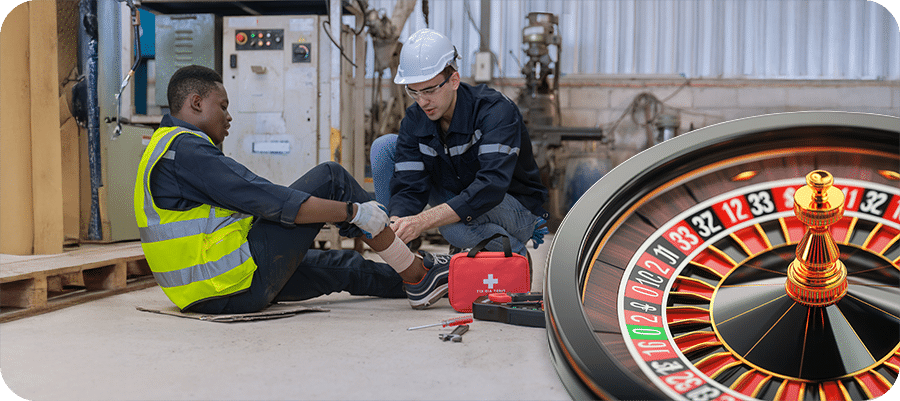
Home Would You Bet Your Paycheck on Safety? That Need to Die Lorem ipsum dolor sit amet, consectetur adipiscing elit. Ut elit tellus, luctus nec ullamcorper mattis, pulvinar dapibus leo. March 14, 2025 By Luke Hillenbrand Imagine this: At the end of every shift, you had to bet your entire paycheck that nobody on your crew got hurt. Would you do anything differently? Would you double-check your PPE? Would you remind a co-worker to use a harness? Would you take that extra second to secure a load or test a machine lockout? The truth is, whether you realize it or not, you are betting on safety every day. The stakes aren’t just money—they’re your health, your reputation, and your future. One bad decision, one shortcut, one ignored hazard, and you could lose everything. Safety is More Than a Rule—It’s a Wager Most people wouldn’t gamble their paycheck on pure luck. But every time someone skips a step, assumes a risk, or rushes a job, they’re rolling the dice. Sometimes they win—nothing happens. Other times? That bet costs them weeks of lost wages, medical bills, or a permanent injury. Think about it: A mechanic skips wearing gloves because “it’s just a quick fix.” That quick fix leads to stitches and time off work. A forklift operator speeds up to finish early. One wrong turn leads to a collision—and unemployment. A roofer skips fall protection “just for a second.” That second changes their life forever. Key Takeaways Lorem Ipsum is simply dummy text of the printing and typesetting industry. Lorem Ipsum has been the industry’s standard dummy text ever since the 1500s, when an unknown printer took a galley of type and scrambled it to make a type specimen book. It has survived not only five centuries, but also Lorem Ipsum is simply dummy text of the printing and typesetting industry. Lorem Ipsum has been the industry’s standard dummy text ever since the 1500s, when an unknown printer took a galley of type and scrambled it to make a type specimen book. It has survived not only five centuries, but also Lorem Ipsum is simply dummy text of the printing and typesetting industry. Lorem Ipsum has been the industry’s standard dummy text ever since the 1500s, when an unknown printer took a galley of type and scrambled it to make a type specimen book. It has survived not only five centuries, but also Lorem Ipsum is simply dummy text of the printing and typesetting industry. Lorem Ipsum has been the industry’s standard dummy text ever since the 1500s, when an unknown printer took a galley of type and scrambled it to make a type specimen book. It has survived not only five centuries, but also The House Always Wins Casinos are designed so that, over time, the house always wins. Unsafe work habits work the same way. Maybe you’ve skipped safety steps before and nothing happened. Maybe you’ve seen others take risks and walk away fine. That’s like winning a few hands in a row—it feels good, but the odds will catch up eventually. Complacency is the biggest con of all. The more times a worker gets away with a risk, the more confident they become in their luck. But luck runs out. And when it does, the price is steep. Related read: Do you own a business in the insurance industry? Check out how Artificial Intelligence is transforming the insurance industry. How to Play It Safe (and Win Every Time) 1. Be Smart Act like your paycheck depends on it. Because in many ways, it does. 2. Think Long-Term A shortcut might save five minutes, but an injury could cost five months. 3. Hold Each Other Accountable Safety isn’t a solo game. Watch out for your crew. Remind them that a mistake could cost them more than just pride. 4. Stay Sharp Keep safety top of mind. Refresh your training. Don’t let routine make you careless. 5. Call Out the Risks If something feels unsafe, stop. Speak up. Fix it before it becomes an accident. Make the Right Bet If you had to bet your paycheck on safety, you’d work smarter. You’d pay attention. You’d make sure nobody around you was cutting corners. You’d take safety seriously—because you’d have too much to lose. The reality? You already do. Every shift, every task, every decision is a bet. Make sure it’s one you can afford to win. Stay sharp. Stay safe. Because in this game, there’s no cashing out. BIS Social Media Follow BIS Safety Software for industry-leading safety updates, training solutions, and more. Hover over each icon for quick access to follow, share, or explore our other channels. Frequently Asked Questions Have question in mind? We are here to answer. If you don’t see your question here, drop us a line at our contact page. Lorem Ipsum is simply dummy text of the printing and typesetting industry? Lorem ipsum dolor sit amet, consectetur adipiscing elit. Ut elit tellus, luctus nec ullamcorper mattis, pulvinar dapibus leo. Lorem Ipsum is simply dummy text of the printing and typesetting industry? Lorem ipsum dolor sit amet, consectetur adipiscing elit. Ut elit tellus, luctus nec ullamcorper mattis, pulvinar dapibus leo. Lorem Ipsum is simply dummy text of the printing and typesetting industry? Lorem ipsum dolor sit amet, consectetur adipiscing elit. Ut elit tellus, luctus nec ullamcorper mattis, pulvinar dapibus leo. Lorem Ipsum is simply dummy text of the printing and typesetting industry? Lorem ipsum dolor sit amet, consectetur adipiscing elit. Ut elit tellus, luctus nec ullamcorper mattis, pulvinar dapibus leo. Lorem Ipsum is simply dummy text of the printing and typesetting industry? Lorem ipsum dolor sit amet, consectetur adipiscing elit. Ut elit tellus, luctus nec ullamcorper mattis, pulvinar dapibus leo. Lorem ipsum dolor sit amet, consectetur adipiscing elit. Ut elit tellus, luctus nec ullamcorper mattis, pulvinar dapibus leo. Lorem ipsum dolor sit amet, consectetur adipiscing elit. Ut elit tellus, luctus nec ullamcorper mattis, pulvinar dapibus leo. Lorem ipsum dolor sit amet, consectetur adipiscing elit. Ut
Safety Meets Tech
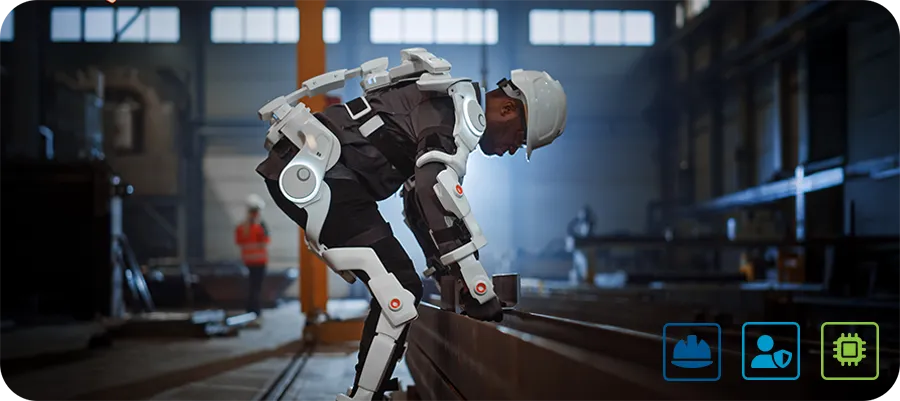
Home Safety Meets Tech The Evolution of Wearable Safety Devices March 13, 2025 By Luke Hillenbrand Workplace safety is evolving. Technology is changing the game. Wearable devices are at the forefront, combining tech and practicality. They protect workers, enhance efficiency, and reduce risks. From smart helmets to biometric sensors, these tools are transforming high-risk environments. Companies investing in them build safer, more productive futures, improving both employee welfare and operational success. With each advancement, these devices demonstrate their potential to reshape workplace safety for good. A Brief History of Wearable Safety Devices Wearable safety isn’t new. For decades, workers relied on helmets, gloves, and goggles to stay safe. Technology changed that. Early alarm systems, like vibration alerts in mining helmets, warned of dangers such as collapsing shafts or unstable terrain. These innovations paved the way for today’s advanced devices. With sensors, GPS, and real-time data, modern wearables are more than protective gear—they are integral tools for workplace safety. From alerting workers in hazardous zones to collecting data that informs long-term safety strategies, wearables have come a long way. The journey from basic alerts to predictive analytics highlights a growing commitment to reducing risks and safeguarding lives. Types of Wearable Safety Devices Modern wearables tackle specific hazards with precision and adaptability: Smart Helmets Equipped with AR (augmented reality), these helmets detect gas leaks and structural hazards. They provide instant alerts and facilitate communication on job sites. Some models integrate thermal imaging to detect hidden dangers, such as overheating machinery or fire risks. Enhanced sensors now enable predictive maintenance, flagging potential failures before they occur. Biometric Sensors These devices monitor vital signs like heart rate, hydration, and body temperature. Advanced models analyze stress levels and alert workers before fatigue sets in, preventing accidents caused by exhaustion. Sensors can now integrate with wearable patches that track hydration in real-time, offering on-the-spot health recommendations. Location Trackers GPS-powered trackers locate lone workers and ensure rapid response during emergencies. Geofencing features notify supervisors when workers enter restricted zones, reinforcing site protocols. New multi-network connectivity ensures these trackers remain operational even in remote locations. Exoskeletons Designed to support lifting tasks, exoskeletons reduce strain and prevent musculoskeletal injuries. They enhance physical endurance, allowing workers to perform repetitive tasks safely. Some models are now powered by AI, adapting to users’ movements for optimized support. Smart Glasses AR overlays provide hands-free access to instructions and safety checklists. These glasses improve precision and reduce downtime by streamlining workflows. Advanced glasses include voice control and facial recognition, enabling rapid identification of team members and secure data sharing. Environmental Monitors These devices detect airborne hazards, such as toxic gases or particulates, ensuring real-time protection in industries like mining and chemical manufacturing. Newer versions now combine weather sensors, giving additional insights into changing conditions that could pose risks. Key Takeaways Wearables are shifting safety from reactive to proactive. Real-time data and predictive analytics let teams prevent accidents—not just respond to them. The best PPE is now smart. From AR helmets to biometric sensors, wearable tech is redefining what it means to be protected on the job. Tech-driven safety boosts more than just compliance. Companies that invest in wearables see gains in productivity, cost savings, and employee morale. The future of safety is connected, personalized, and always on. Smart wearables are evolving into essential tools for creating safer, smarter work environments. Industries Leading the Adoption of Wearable Technology Industries with high risks are leading the way in wearable adoption. Their focus on safety and efficiency makes wearables indispensable tools: Construction Smart helmets and trackers improve site safety, aiding navigation through busy or hazardous areas. By providing real-time updates, they reduce the chance of accidents. Wearables also integrate with project management software, enhancing coordination and efficiency. Oil and Gas Biometric sensors and gas detectors protect workers from harmful exposures. Wearables also ensure compliance with safety standards in environments where stakes are high. Some systems now include drone connectivity, combining aerial surveillance with wearable monitoring. Manufacturing Exoskeletons reduce physical strain, while smart glasses streamline precision tasks. These technologies improve productivity while cutting down on workplace injuries. Collaborative robots (cobots) now pair with wearables for seamless workflows. Healthcare Wearables track stress and fatigue during long shifts, protecting healthcare professionals in high-pressure environments. Devices like wearable ECG monitors safeguard their health while improving patient care. Integration with telehealth platforms ensures that real-time data supports decision-making. Mining Monitors and trackers enhance safety in remote and hazardous locations. Advanced systems ensure miners can be located and rescued swiftly in emergencies. Combined with underground communication networks, these tools ensure 24/7 connectivity in challenging conditions. Benefits of Wearable Safety Technology 1. Real-Time Monitoring Continuous data collection allows for instant responses, preventing accidents before they occur. Live dashboards centralize this data, providing supervisors with actionable insights. 2. Enhanced Compliance Automated tracking simplifies adherence to safety protocols, reducing manual errors. Regulatory updates can be pushed directly to wearables, ensuring workers remain informed. 3. Improved Productivity Ergonomic support minimizes injuries and fatigue, boosting worker efficiency. Wearables also streamline workflows, allowing workers to focus on tasks without interruptions. 4. Cost Savings Preventing incidents and reducing downtime saves businesses significant expenses. Predictive analytics further reduce costs by flagging issues before they escalate. 5. Data-Driven Insights Wearables generate actionable data, enabling companies to optimize safety measures and predict risks. Advanced algorithms now analyze data trends to improve forecasting. 6. Employee Engagement Workers feel safer and more valued when equipped with cutting-edge safety gear, fostering a positive workplace culture. Gamified safety metrics on wearables further encourage compliance and proactive behavior. Challenges and Considerations Privacy and security remain key concerns. Companies must safeguard data with encryption, restricted access, and regular audits. Transparent policies help build employee trust, ensuring they understand how their data is used. Training is also essential to ensure smooth integration. Wearables must balance functionality with comfort, ensuring employees adopt them willingly. Companies must also address device interoperability to integrate wearables seamlessly with existing systems. The Future of Wearable Safety Devices Wearables will only get better. Advances in
Make Your Incident Data Work For You
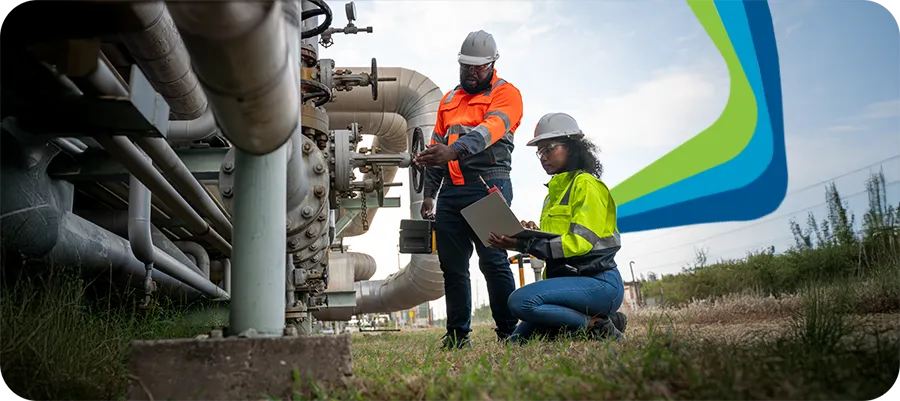
Home Make Your Incident Data Work For You Turn Numbers into Actionable Insights March 13, 2025 By Luke Hillenbrand Every workplace safety program generates incident data, but not all organizations know how to make the most of it. Incident reports, near-miss logs, and safety observations provide more than just numbers—they reveal patterns, highlight risks, and offer a roadmap for improvement. The challenge lies in translating this raw data into clear, actionable insights that drive meaningful change. Without the right strategies, data can remain an untapped resource, leaving organizations reactive instead of proactive. This guide explores how to analyze incident data effectively, identify trends, and use those insights to enhance workplace safety. Why Incident Data Matters Incident data isn’t just a record of what’s gone wrong—it’s a tool for understanding the “why” behind workplace risks. Every report contains valuable information about hazards, behaviors, and system failures that contribute to incidents. When analyzed effectively, this data helps organizations: Identify Patterns Highlight recurring risks and pinpoint high-risk areas, equipment, or processes. Drive Preventive Measures Use trends to implement targeted safety improvements before incidents escalate. Support Compliance Provide documentation that demonstrates a proactive approach to safety during audits. Boost Accountability Show clear links between safety initiatives and outcomes, reinforcing a culture of responsibility. By leveraging incident data, safety managers can shift from reacting to problems to preventing them entirely. Step 1: Collect Consistent, High-Quality Data The foundation of actionable insights is reliable data. Inconsistent or incomplete incident reporting undermines your ability to draw meaningful conclusions. Best Practices for Data Collection Standardized Reporting Forms Ensure every incident report includes key details such as date, time, location, individuals involved, and a clear description of the event. Encourage Near-Miss Reporting Near-misses are early warning signs of potential hazards. Make it easy and non-punitive for employees to report them. Use Mobile Tools Digital reporting systems streamline data collection and reduce errors compared to paper-based processes. Case Study: A logistics company implemented a mobile app for near-miss reporting. Within six months, reports increased by 40%, uncovering trends related to poorly marked loading zones. Addressing these issues reduced incidents by 25% the following quarter. Step 2: Centralize and Organize Your Data Scattered data creates blind spots. Consolidating all incident reports, safety observations, and inspection logs into a centralized system ensures nothing slips through the cracks. How to Centralize Effectively Use Safety Management Software Platforms designed for workplace safety consolidate data into a single dashboard, making it easy to analyze trends. Tag and Categorize Data Organize reports by type, location, equipment, or contributing factors to identify recurring issues. Integrate With Existing Systems Ensure your safety software connects with HR, maintenance, and compliance platforms to provide a comprehensive view. Pro Tip: Regularly review your data for completeness and consistency. Missing or inaccurate information can skew results and lead to flawed conclusions. Step 3: Analyze for Patterns and Trends Once your data is centralized, the next step is to identify patterns that point to underlying risks. Look for clusters of similar incidents or recurring hazards across locations. What to Look For Recurring Equipment Failures Are specific machines or tools involved in multiple incidents? Time-Based Trends Do incidents spike during certain shifts or seasons? Location-Specific Risks Are certain areas of your facility more prone to hazards? Example in Action: A manufacturing plant noticed a pattern of injuries involving workers replacing conveyor belts during peak shifts. The analysis revealed that time pressures led to shortcuts in safety procedures. By scheduling maintenance during slower periods and providing additional training, the company reduced injuries by 30%. Step 4: Translate Insights Into Actionable Changes Data is only as valuable as the actions it inspires. Once trends are identified, use them to implement targeted improvements. Strategies for Acting on Insights Revise Policies Update safety protocols to address identified risks, such as enhanced procedures for high-risk tasks. Targeted Training Provide specific training sessions based on the most common incident types or contributing factors. Engineering Controls Modify equipment, tools, or workspaces to eliminate hazards entirely. Case Study: A construction company analyzed incident reports and found that ladder-related falls were a recurring issue. They introduced new ladder inspection protocols, provided hands-on training, and replaced aging equipment. The result? A 50% decrease in ladder-related injuries within a year. Step 5: Share Insights With Your Team Transparency is key to fostering a safety-first culture. Sharing insights from incident data helps employees understand risks and reinforces their role in creating a safer workplace. How to Communicate Effectively Visual Dashboards Use charts, graphs, and heatmaps to make data easy to understand. Regular Safety Meetings Discuss trends and progress during team huddles or monthly safety reviews. Highlight Successes Celebrate reductions in incidents or near-misses to keep morale high and motivate continued participation. Pro Tip: Frame discussions around “how we can improve” rather than assigning blame. A solutions-focused approach encourages openness and collaboration. Step 6: Monitor and Measure Results Implementing changes is only part of the process. Continuously monitoring outcomes ensures your actions are effective and helps refine your approach over time. Metrics to Track Incident Reduction Are reported incidents decreasing after implementing changes? Employee Engagement Are workers participating more actively in reporting and training? Audit Performance Has compliance improved during inspections or audits? Example in Action: After a healthcare facility introduced monthly safety meetings and revamped reporting protocols, they saw a 20% reduction in patient-handling injuries within six months. Tracking these metrics highlighted the direct impact of their efforts. How Technology Enhances the Process Modern safety management software is an invaluable tool for turning data into actionable insights. Automation and analytics features simplify every step of the process, from data collection to trend analysis. Key Features to Look For Real-Time Reporting Capture incidents and near-misses instantly with mobile tools. Automated Analytics Generate reports that highlight patterns and trends without manual effort. Customizable Dashboards Visualize data in a way that’s meaningful to your organization’s goals. Pro Tip: Choose software that integrates seamlessly with existing systems, ensuring all relevant data flows into a single platform. The Bottom Line:


